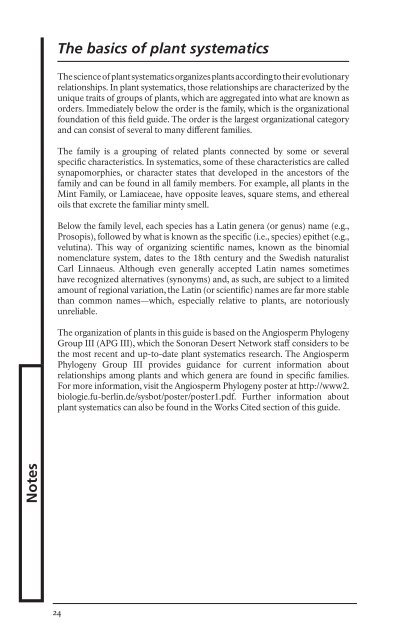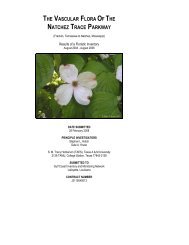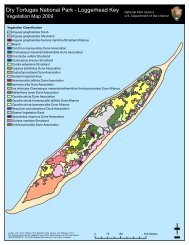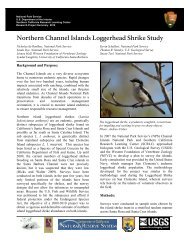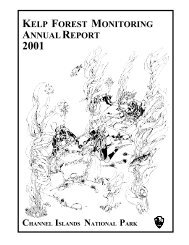Plants of Casa Grande Ruins National Monument - NPS Inventory ...
Plants of Casa Grande Ruins National Monument - NPS Inventory ...
Plants of Casa Grande Ruins National Monument - NPS Inventory ...
You also want an ePaper? Increase the reach of your titles
YUMPU automatically turns print PDFs into web optimized ePapers that Google loves.
Notes<br />
24<br />
The basics <strong>of</strong> plant systematics<br />
The science <strong>of</strong> plant systematics organizes plants according to their evolutionary<br />
relationships. In plant systematics, those relationships are characterized by the<br />
unique traits <strong>of</strong> groups <strong>of</strong> plants, which are aggregated into what are known as<br />
orders. Immediately below the order is the family, which is the organizational<br />
foundation <strong>of</strong> this field guide. The order is the largest organizational category<br />
and can consist <strong>of</strong> several to many different families.<br />
The family is a grouping <strong>of</strong> related plants connected by some or several<br />
specific characteristics. In systematics, some <strong>of</strong> these characteristics are called<br />
synapomorphies, or character states that developed in the ancestors <strong>of</strong> the<br />
family and can be found in all family members. For example, all plants in the<br />
Mint Family, or Lamiaceae, have opposite leaves, square stems, and ethereal<br />
oils that excrete the familiar minty smell.<br />
Below the family level, each species has a Latin genera (or genus) name (e.g.,<br />
Prosopis), followed by what is known as the specific (i.e., species) epithet (e.g.,<br />
velutina). This way <strong>of</strong> organizing scientific names, known as the binomial<br />
nomenclature system, dates to the 18th century and the Swedish naturalist<br />
Carl Linnaeus. Although even generally accepted Latin names sometimes<br />
have recognized alternatives (synonyms) and, as such, are subject to a limited<br />
amount <strong>of</strong> regional variation, the Latin (or scientific) names are far more stable<br />
than common names—which, especially relative to plants, are notoriously<br />
unreliable.<br />
The organization <strong>of</strong> plants in this guide is based on the Angiosperm Phylogeny<br />
Group III (APG III), which the Sonoran Desert Network staff considers to be<br />
the most recent and up-to-date plant systematics research. The Angiosperm<br />
Phylogeny Group III provides guidance for current information about<br />
relationships among plants and which genera are found in specific families.<br />
For more information, visit the Angiosperm Phylogeny poster at http://www2.<br />
biologie.fu-berlin.de/sysbot/poster/poster1.pdf. Further information about<br />
plant systematics can also be found in the Works Cited section <strong>of</strong> this guide.


